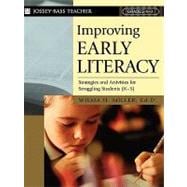
Note: Supplemental materials are not guaranteed with Rental or Used book purchases.
Purchase Benefits
What is included with this book?
| Preface | vii | ||||
| Acknowledgments | ix | ||||
| About the Author | xi | ||||
|
1 | (30) | |||
|
3 | (7) | |||
|
10 | (1) | |||
|
10 | (4) | |||
|
14 | (2) | |||
|
16 | (4) | |||
|
20 | (2) | |||
|
22 | (3) | |||
|
25 | (2) | |||
|
27 | (1) | |||
|
28 | (3) | |||
|
31 | (76) | |||
|
33 | (2) | |||
|
35 | (69) | |||
|
104 | (3) | |||
|
107 | (18) | |||
|
109 | (5) | |||
|
114 | (1) | |||
|
114 | (3) | |||
|
117 | (8) | |||
|
125 | (48) | |||
|
127 | (26) | |||
|
153 | (20) | |||
|
173 | (26) | |||
|
175 | (1) | |||
|
175 | (2) | |||
|
177 | (22) | |||
|
199 | (32) | |||
|
201 | (16) | |||
|
217 | (14) | |||
|
231 | (38) | |||
|
233 | (9) | |||
|
242 | (27) | |||
| Appendix I: Big Book Resources | 269 | (2) | |||
| Appendix II: Predictable Books | 271 | (4) | |||
| Appendix III: Recommended LEA Resources | 275 | (2) | |||
| Appendix IV: For Additional Reading | 277 | (2) | |||
| Appendix V: Chants, Finger Plays, Action Verses, and Recommended Books | 279 | (8) | |||
| Appendix VI: Wordless Books | 287 | (2) | |||
| Appendix VII: The Dolch Basic Sight Words | 289 | (4) | |||
| Appendix VIII: Books for Reviewing Individual Letter Names | 293 | (6) | |||
| Appendix IX: Cooking and Baking Activities to Review Letter Names | 299 | (4) | |||
| Appendix X: Contemporary Easy-to-Read Trade Books | 303 | (2) | |||
| Appendix XI: Further Reading on Phonics | 305 | (2) | |||
| Appendix XII: Trade Books for Improving Phonic Skills in Context | 307 | (6) | |||
| Appendix XIII: Books to Promote Enjoyment of Words | 313 | (2) | |||
| Appendix XIV: Poetry Books for Young Children | 315 | (2) | |||
| Appendix XV: Books for Visual Imagery | 317 | (2) | |||
| Bibliography | 319 | (8) | |||
| Answer Key | 327 |
The New copy of this book will include any supplemental materials advertised. Please check the title of the book to determine if it should include any access cards, study guides, lab manuals, CDs, etc.
The Used, Rental and eBook copies of this book are not guaranteed to include any supplemental materials. Typically, only the book itself is included. This is true even if the title states it includes any access cards, study guides, lab manuals, CDs, etc.